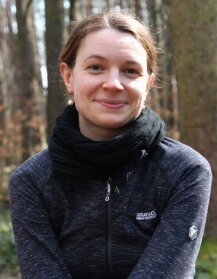
About our Voice Naturalness research
Perceived naturalness of a voice is a prominent feature which affects our interaction with both human and artificial agents. Listeners seem to be very sensitive to unnatural voice features, which can have tremendous implications for communicative quality, for example in individuals with speech-language pathologies. Now, in the digital era, voice synthesis technology quickly invades everyday life, e.g. in smart-home-devices, customer calls, gaming environments or support platforms, which has brought questions of naturalness to the forefront of scientific research.
But despite its importance, naturalness is a highly under-researched topic in voice perception. In this project, we address this gap from both a conceptual and an empirical angle. Currently, voice naturalness lacks a consistent definition and terminology in the literature. Therefore, we propose a concise conceptual framework for the definition of voice naturalness, which allows enough flexibility necessary to be applicable across diverse empirical designs, while at the same time promoting comparability across research domains. In a next step, we will explore the neurocognitive architecture that supports the processing of human and synthetic voices, with a specific interest in shared vs. diverging networks. Finally, we will explore the processing of voice naturalness in hearing-impaired individuals using cochlear implants. We thus aim for a deeper understanding of the determinants of perceived naturalness in human and synthesized voices, with important implications for the effective use of synthetic voices in artificial agents for individuals with different hearing abilities
Funding
This project has received funding from the European Union’s Horizon Europe Framework programme under the Marie Skłodowska Curie Grant Agreement No 101168998. Project at FSU Jena: “Neurocognitive processing of voice naturalness in human and synthetic voices”; funding period 2025-2028, PIs: Christine Nussbaum and Stefan R. Schweinberger
Publications
Nussbaum, C., Frühholz, S., & Schweinberger, S. R. (2025). Understanding voice naturalness. Trends in Cognitive Sciences. https://doi.org/10.1016/j.tics.2025.01.010External link
Nussbaum, C., Pöhlmann, M., Kreysa, H., & Schweinberger, S. R. (2023). Perceived naturalness of emotional voice morphs. Cognition and Emotion, 37(4), 731-747., https://doi.org/10.1080/02699931.2023.2200920External link

-
Stefan R. Schweinberger
Department for General Psychology and Cognitive Neuroscience, FSU Jena, stefan.schweinberger@uni-jena.de
-
Sascha Frühholz
Department of Psychology, University of Oslo, sascha.fruhholz@psykologi.uio.no
-
Manuel Pöhlmann
Department for General Psychology and Cognitive Neuroscience, FSU Jena, manuel.pöhlmann@uni-jena.de
-
Helene Kreysa
Department for General Psychology and Cognitive Neuroscience, FSU Jena, helene.kreysa@uni-jena.de
-
Simone Dahmen
Department for General Psychology and Cognitive Neuroscience, FSU Jena, simone.dahmen@uni-jena.de
